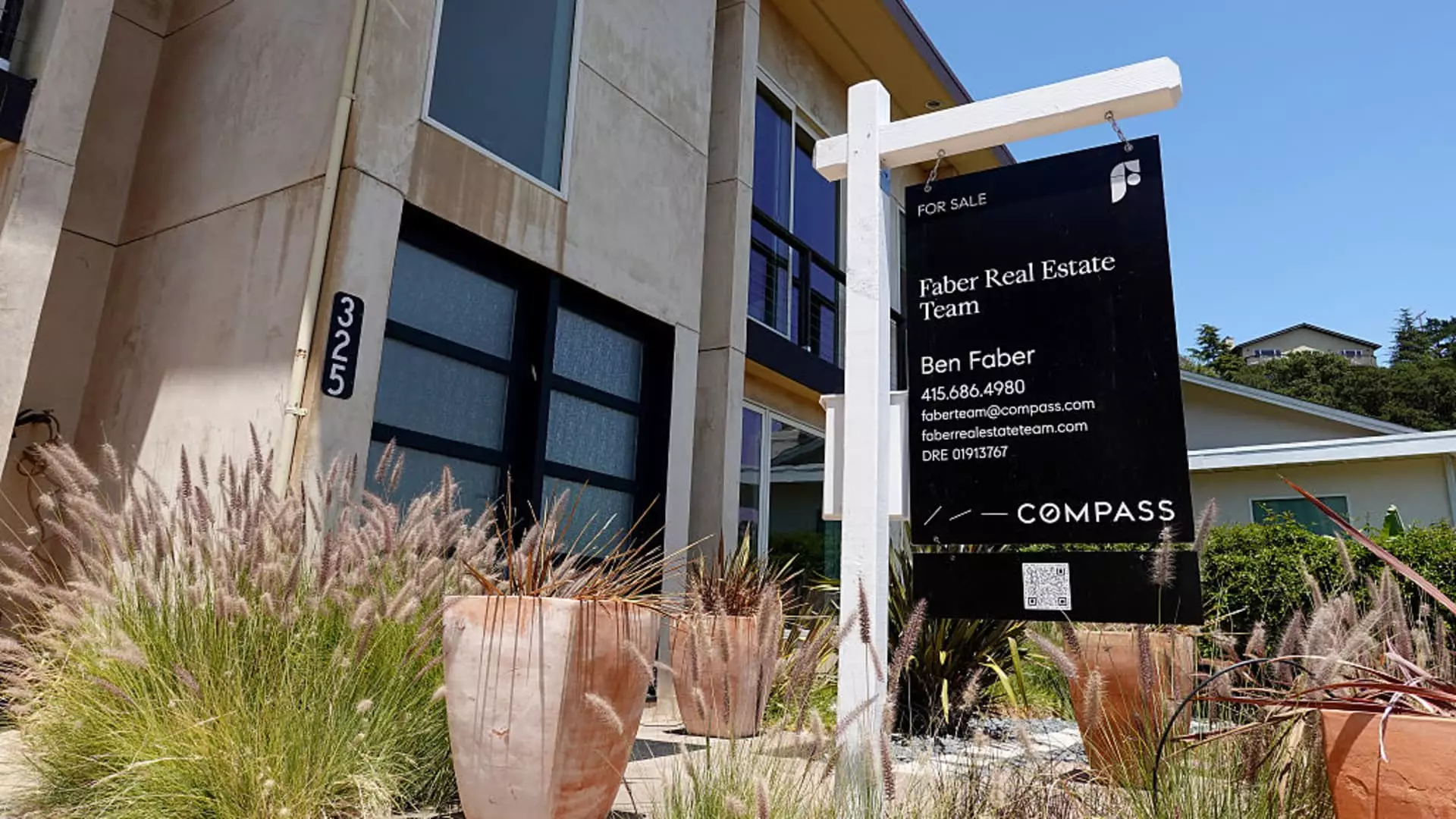In a landscape once characterized by soaring home prices and frantic bidding wars, the U.S. housing market is finally experiencing a long-overdue recalibration. Recent reports reveal a stagnation in home prices, which indicates a potentially seismic shift in a once-booming sector. The S&P CoreLogic Case-Shiller Index highlights a mere 2.7% annual increase in home prices as of April—down from 3.4% in March—marking the smallest gain in nearly two years. What was once perceived as an endless upward trajectory is now losing steam, trapped in a contrasting narrative of rising supply and dwindling demand.
The subtle nuances of the market reveal a disconnect between headlines and reality. While past exuberance drove people to chase after overpriced properties, a more mature market is emerging. The reporting period, which reflects a three-month average ending in April, belies more immediate metrics. Up-to-date analyses from Parcl Labs indicate that home prices are now flat year over year. The conundrum becomes clear: Are we seeing a temporary plateau, or is this the heralding of a more profound transformation toward sustainable market valuations?
A Regional Renaissance
One of the most illuminating aspects of the current market is the regional reshuffling taking place. Once-celebrated pandemic hot spots, such as Tampa and Dallas, are witnessing downward price adjustments; Tampa experienced a notable dip of 2.2%. Meanwhile, cities that had been overlooked, particularly in the Midwest and Northeast, are now emerging as unlikely leaders in the recovery. New York, with a robust 7.9% annual gain, showcases the resilience and renewed appeal of historically stable markets. This shift is more than a mere statistical blip; it indicates a significant transition where the principles of sound economics are reclaiming the spotlight, displacing speculative activity that prevailed during the pandemic’s fever pitch.
Nicholas Godec from S&P Dow Jones Indices eloquently captures the essence of this evolution, remarking on how the cycle’s leadership has dynamically transitioned. The significance of this change cannot be overstated; it reflects a market increasingly fueled by fundamental values, rather than the capricious ambitions of speculators.
First-Time Buyers on the Sidelines
Amidst this transformation, the plight of first-time buyers has become a poignant backdrop. Rising mortgage rates, which soared over 7% before settling down slightly, have made monthly payments a daunting hurdle for many aspiring homeowners. The National Association of Realtors reports a substantial drop in first-time buyer participation, indicating that only 30% of home sales in May were captured by this essential demographic—down from a historical average of 40%. This disconnect between rising prices and the capacity for entry into the market serves as a critical barometer of economic health and social equity.
It becomes increasingly clear that a substantial pool of potential buyers remains on the sidelines, priced out of their dreams of homeownership. The continuing trend of high mortgage rates signals a significant barrier that restricts access to the housing market for first-timers, potentially jeopardizing the aspirations of an entire generation.
Supply Constraints and Future Outlook
A paradox persists: while the supply of homes for sale is on an upward trajectory, it remains well below pre-pandemic levels. A report by Redfin states that only 6% of sellers risk losing money on their sales—a figure that, while slightly improved from the previous year, is still historically low. Homeowners are understandably hesitant to part with their pandemic-era sub-4% mortgage rates, creating a supply-demand imbalance that keeps prices buoyed above the precipice of collapse.
Despite fears that price corrections could mirror the notorious declines observed during the subprime mortgage crisis, the current landscape presents a conundrum. As Godec points out, the existing homeowner reluctance, coupled with a lag in new construction, helps maintain a precarious price floor, preventing a market freefall.
In our evolving housing ecosystem, balancing these dynamics is pivotal. As the nation looks toward new solutions for affordability, we must confront the critical need for policy interventions that prioritize equitable access to homeownership. It is paramount, now more than ever, that we foster a robust housing market that serves not just the privileged few but as a foundation for the broader American dream.

Leave a Reply